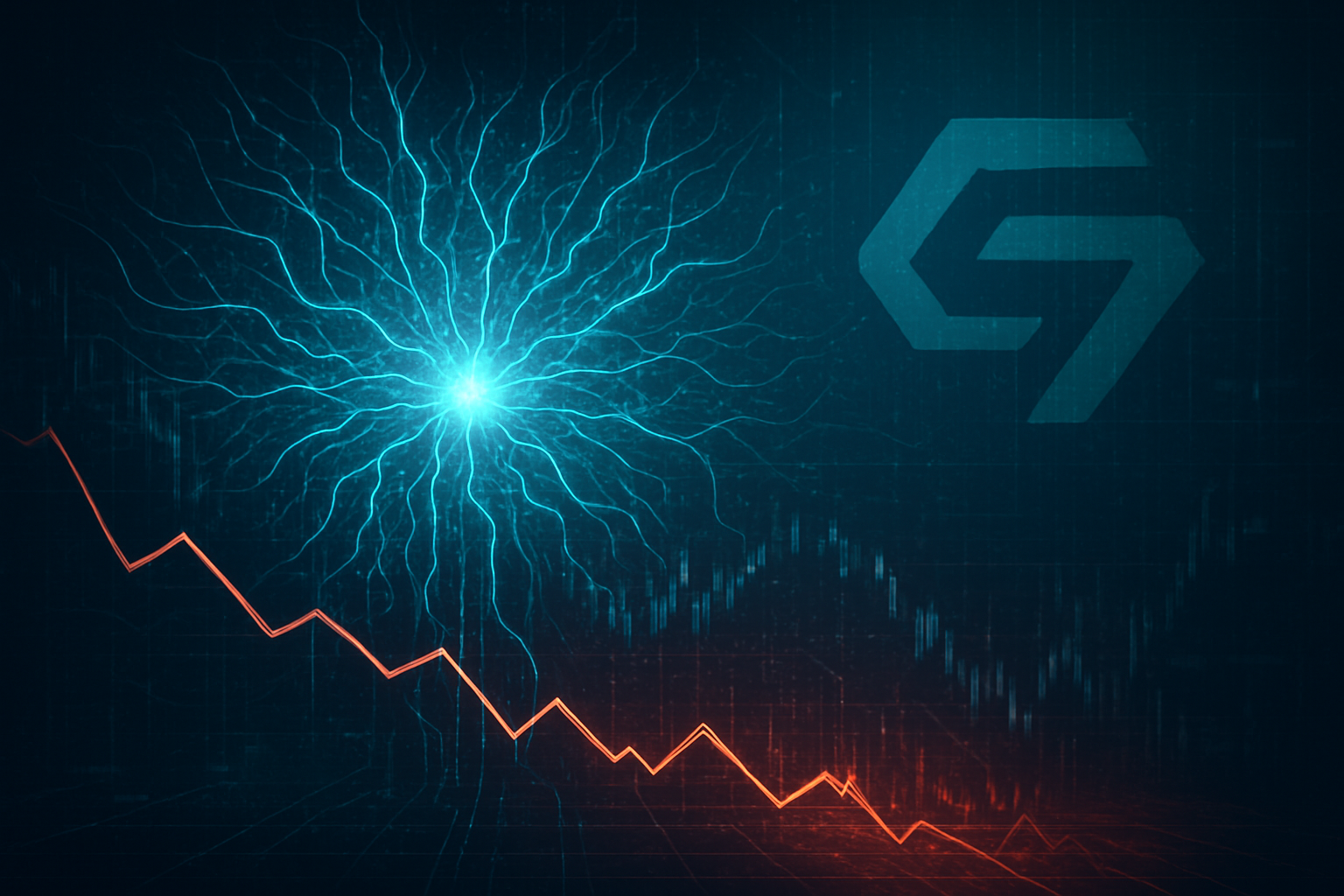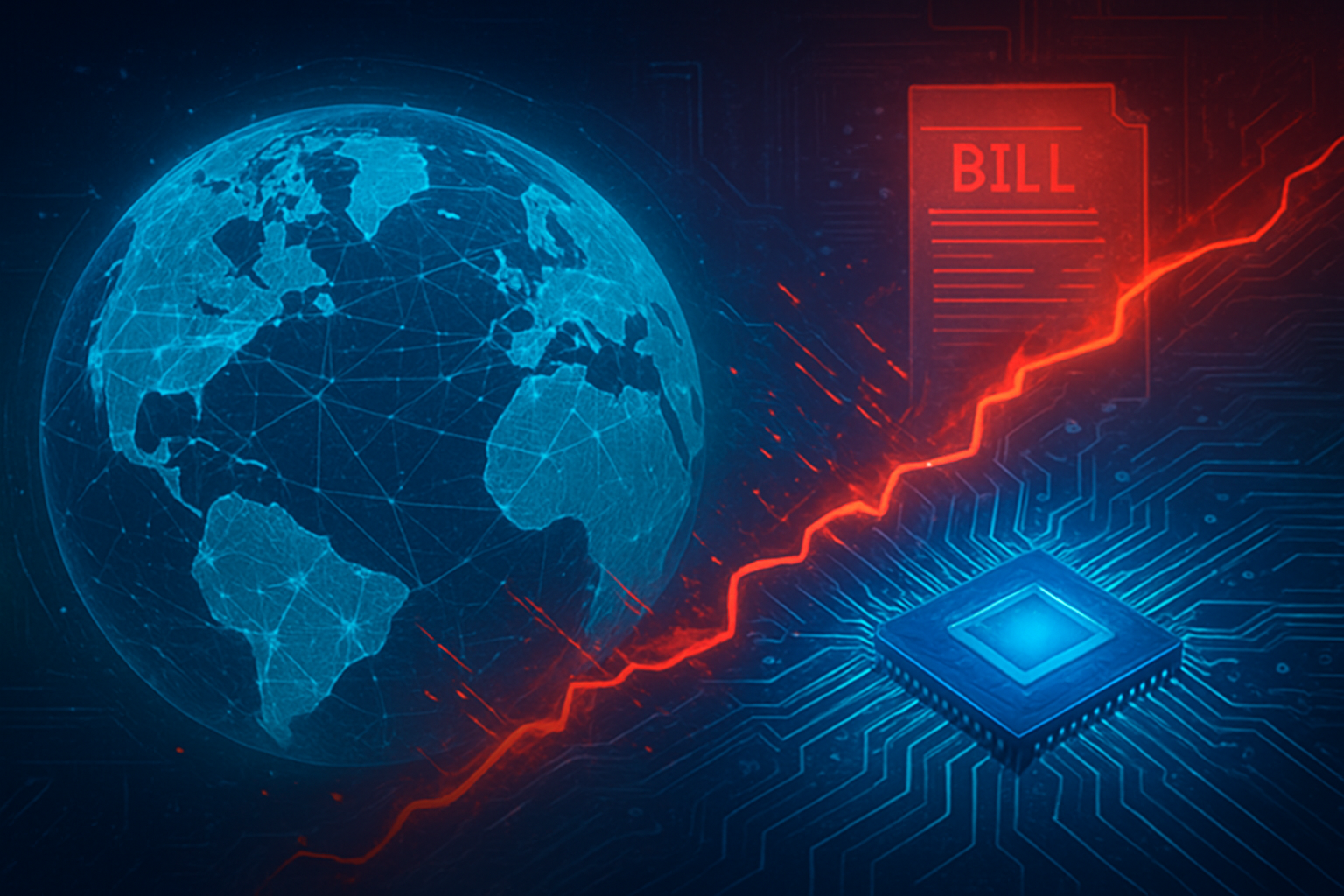The United States finds itself at a critical juncture in the burgeoning era of artificial intelligence, facing a deeply polarized political landscape regarding how this transformative technology should be governed. As AI rapidly integrates into every facet of society, from healthcare to national security, a fundamental tension has emerged between those advocating for unbridled innovation to maintain global competitiveness and those demanding robust regulatory frameworks to ensure safety, ethics, and fairness. This ideological chasm extends across political bases, creating a complex and often contradictory patchwork of proposals that could define America's leadership – or lag – in the global AI race.
At the heart of the debate lies a struggle not just over policy specifics, but over the very philosophy of government intervention in rapidly evolving technological frontiers. With the current date being November 20, 2025, the echoes of past administrations' differing approaches—from the Biden administration's rights-based framework to the Trump administration's emphasis on reducing regulatory burdens for "global AI dominance"—continue to shape the discourse. The outcome of this high-stakes political wrestling match will not only determine the future trajectory of AI development within the US but will also have profound implications for its economic competitiveness, national security, and societal well-being.
A Nation Divided: Federalism, Philosophy, and the Future of AI Governance
The political landscape surrounding AI regulation in the US is characterized by a multi-layered and often fractious debate, reflecting deep ideological divisions within both major parties and across different levels of government. A primary area of contention revolves around the locus of regulatory authority: should AI governance be driven by a comprehensive federal framework, or should individual states serve as "laboratories of democracy," crafting tailored legislation to address local concerns?
Proponents of federal preemption argue that a unified national approach is essential to reduce legal uncertainty for AI developers, foster a consistent innovation environment, and prevent a stifling "patchwork" of state-specific rules. This perspective often aligns with segments of the tech industry and those who prioritize national economic competitiveness. Conversely, many state officials and advocates contend that states are better equipped to respond to the nuanced impacts of AI on their populations, citing proactive state laws addressing algorithmic discrimination, deepfakes, and transparency. Efforts to impose a federal moratorium on state AI laws have, in fact, faced bipartisan opposition in the Senate, underscoring a reluctance to centralize all authority.
Beyond the question of federalism, the debate is deeply philosophical, pitting the imperative for innovation against the necessity of safety and ethical oversight. The current Trump administration, for example, has prioritized "global AI dominance," seeking to reduce what it views as "onerous rules" and shifting towards a risk-based model that emphasizes national security and economic growth. This approach has included rescinding previous executive orders and replacing them with directives aimed at advancing AI adoption by minimizing regulatory barriers. A notable example is the "Preventing Woke AI" executive order, which aims to prohibit federal government use of large language models incorporating diversity, equity, and inclusion (DEI) in generated responses—a clear ideological stance on what constitutes appropriate AI behavior and regulation.
In stark contrast, the previous Biden administration focused on ensuring "automated systems work for the American people," introducing the AI Bill of Rights, which aimed for a rights-based framework requiring notice to individuals impacted by high-impact AI systems. This requirement was subsequently removed in the Trump administration's directives. These differing approaches highlight a core disagreement on the very purpose of AI regulation: is it primarily to unleash technological potential, or to safeguard against potential harms and ensure equitable outcomes? Specific harms, from existential risks to algorithmic discrimination, data privacy, and job displacement, also fuel these divisions, with varying degrees of urgency and proposed solutions from different political factions.
Navigating the Regulatory Maze: Impact on AI Companies, Tech Giants, and Startups
The fragmented and ideologically charged political landscape surrounding AI regulation in the US casts a long shadow over the entire AI industry, creating a complex and often uneven playing field for companies ranging from burgeoning startups to established tech giants. The absence of a cohesive federal framework, coupled with a burgeoning "patchwork" of state-level initiatives, introduces significant uncertainty that directly impacts competitive dynamics, operational strategies, and market positioning.
For tech giants such as Alphabet (NASDAQ: GOOGL), Microsoft (NASDAQ: MSFT), and Meta Platforms (NASDAQ: META), the current environment presents both challenges and strategic opportunities. With vast legal and and financial resources, these companies are better equipped to navigate the intricate web of state and potential federal regulations. They can absorb high compliance costs, establish dedicated ethical AI teams, and actively engage in lobbying efforts to shape policy in their favor, often advocating for federal preemption to avoid a fragmented system. This allows them to maintain or even strengthen their market dominance, leveraging their established positions to deepen AI integration into existing products and expand into new AI-driven services, while smaller competitors struggle to keep pace. Their ability to diversify supply chains and form government partnerships further aids in navigating policy uncertainties.
Conversely, AI startups and smaller firms face disproportionate burdens. The high costs associated with complying with inconsistent state-specific rules, coupled with the uncertainty surrounding future federal mandates, create significant barriers to entry and expansion. Regulatory ambiguity can stifle innovation, as startups become hesitant to invest in novel AI applications due to unclear legal standards and potential liabilities, particularly for generative AI outputs. This environment makes it harder for them to attract venture capital, as investors grow cautious when faced with unpredictable policy changes and evolving data privacy concerns. Startups with highly speculative valuations or unclear monetization strategies are particularly vulnerable, often forced to focus on niche markets or regions with clearer regulatory environments, or to proactively build AI solutions that inherently address ethical and safety concerns to pre-empt future regulations.
Across the board, the lack of a unified national AI strategy, especially when compared to comprehensive frameworks like the European Union's AI Act, could impact America's global leadership in AI. While a deregulatory stance is championed by some as essential for accelerating scientific advancements, others argue that predictable and consistent rules are crucial for fostering responsible innovation. Companies are increasingly adopting internal AI policies, conducting public-facing transparency initiatives, and performing AI impact assessments, often aligning with non-binding frameworks like NIST AI to demonstrate responsible development. Investors, in turn, are prioritizing companies that demonstrate geopolitical agility, strong technological advantages, and clear regionalization strategies to thrive in this uncertain regulatory climate, where the ability to adapt strategically is paramount.
A Global Divergence: US Regulatory Divisions and the Broader AI Landscape
The deep political divisions within the US regarding AI regulation carry profound implications, not only for the domestic technology sector but also for the broader global AI landscape and America's standing as a technological leader. The current fragmented approach, characterized by a lack of comprehensive federal legislation and a burgeoning "patchwork" of state-level laws, stands in stark contrast to the more unified and proactive strategies emerging from other major global players, creating a "global regulatory schism."
This divergence is most evident when comparing the US to the European Union (EU), which has pioneered a comprehensive, risk-based framework with its landmark AI Act. While the EU prioritizes safety, ethical considerations, transparency, and human oversight, albeit with potentially higher compliance costs, the US currently leans towards a market-driven, sectoral, and enforcement-led approach. This US strategy, heavily influenced by presidential directives, agency enforcement, and diverse state laws, primarily aims to foster innovation and maintain a competitive edge. China, another major AI power, employs a distinct vertical, technology-specific framework, heavily influenced by national security and economic development goals. These differing philosophies mean that companies operating globally face a complex web of potentially conflicting regulations, increasing compliance burdens and the risk of regulatory arbitrage, where development might gravitate to jurisdictions with the least stringent rules.
The ongoing tension between prioritizing rapid innovation and ensuring robust safety and ethical safeguards is a central concern. Critics warn that an overly hands-off approach in the US could lead to unchecked AI misuse, discriminatory outcomes, and threats to privacy and civil liberties, potentially eroding public trust in AI systems. The absence of clear and consistent federal guidelines makes addressing issues like algorithmic bias, lack of transparency in AI decision-making, and the spread of harmful content like deepfakes a significant challenge. Conversely, proponents of a lighter touch argue that overly restrictive federal laws could drive AI talent and investment overseas, undermining US competitiveness in the global "AI race."
Historically, the US has often adopted a "hands-off" approach to nascent technologies, prioritizing rapid growth. This was evident with the internet and social media, where a laissez-faire stance initially allowed for immense innovation but later resulted in widespread concerns regarding data privacy, monopolistic practices, and disinformation, leading to a scramble for reactive regulation. The current debate over AI regulation echoes these past challenges, highlighting a recurring dilemma between proactive safeguards and an innovation-first approach. The state-by-state approach to AI regulation strikingly mirrors the development of data privacy laws, where the absence of a comprehensive federal law led to a diverse and often conflicting set of state-specific regulations, creating compliance complexities. This historical context suggests that achieving a unified federal AI law will be an uphill battle, with significant congressional inertia and powerful lobbying efforts further complicating the path forward.
The Road Ahead: Navigating AI's Evolving Regulatory Horizon
Looking forward, the trajectory of AI regulation in the US is expected to remain a complex and often contentious journey, heavily influenced by the prevailing political divisions and the relentless pace of technological advancement. In the near term, the absence of comprehensive federal legislation ensures that a "patchwork" of state and local AI laws will continue to dominate the landscape. Experts predict that most states will introduce some form of AI regulation by 2026, building on pioneering efforts like Colorado's AI Act (effective February 2026), which imposes duties on developers and deployers of "high-risk" AI systems, or California's legislation requiring digital marking of AI outputs (SB-942, effective January 2026).
While broad federal legislation is unlikely to pass in the immediate future due to ongoing congressional gridlock, targeted federal actions are anticipated. These will likely focus on the federal government's internal use of AI, national security concerns, and combating illicit content like non-consensual explicit images—areas where bipartisan agreement is more attainable. Federal investment in AI research and development, particularly for defense and intelligence, is also expected to increase, alongside more restrictive export controls on AI technologies.
However, a significant long-term battle looms over federal preemption versus state autonomy. The current Trump administration, favoring a "permissive approach" to foster innovation, has already issued executive orders aimed at "Removing Barriers to American Leadership in AI" and has drafted an EO titled "Eliminating State Law Obstruction of National AI Policy." This draft proposes aggressive measures, including directing the Justice Department to sue states with AI laws and withholding federal funding from non-compliant states, signaling a clear intent to establish a single federal standard. Yet, past attempts by Republicans in Congress to impose a federal moratorium on state AI regulations have failed due to bipartisan opposition, indicating that states will continue to fiercely guard their autonomy in addressing AI-related harms.
As AI applications rapidly expand, future regulations will increasingly interact with critical sectors. Government operations will see continued AI integration for mandates, benefits adjudication, and public safety. Critical infrastructure, healthcare, and financial services will face heightened scrutiny, driving domain-specific regulations to ensure safety, privacy, and fairness. The use of AI in democratic processes, particularly concerning deepfakes and automated influence operations, will also be a major regulatory flashpoint. Experts predict a continued push for Explainable AI (XAI), requiring models to be transparent and understandable, especially in high-stakes decision-making. Despite these anticipated developments, significant challenges persist, including the inherent difficulty of balancing innovation with risk mitigation, the rapid pace of technological evolution outstripping legislative processes, and the ongoing struggle to achieve political consensus on fundamental definitions and policy solutions. Many experts and the public alike worry the US government will not go far enough in regulating AI, potentially leading to an "AI backlash" and renewed demands for intervention.
A Precarious Balance: Charting the Course for AI Governance
The political landscape surrounding AI regulation in the US is a crucible where the competing demands of innovation and safety are forged amidst deep ideological divisions. The current "patchwork" of state-level laws, coupled with a federal approach characterized by executive directives and agency enforcement rather than comprehensive legislation, creates an environment of both dynamism and uncertainty. This fragmented approach risks hindering US competitiveness on the global stage, especially when contrasted with the more unified strategies of regions like the EU, and poses significant challenges for businesses, particularly agile startups grappling with complex compliance requirements.
The significance of this ongoing debate cannot be overstated. It represents a defining moment in AI history, determining whether the US will proactively shape the ethical and safe deployment of AI or react belatedly to unforeseen harms. The lessons from past tech regulatory challenges, where a "wait-and-see" approach often led to belated and less effective oversight, serve as a stark warning. The tension between those who champion minimal regulation for rapid advancement and those who demand robust safeguards against potential societal harms will continue to define the discourse.
In the coming weeks and months, all eyes will be on how the federal government attempts to assert its influence over state-level initiatives, particularly through executive actions aimed at preemption. Simultaneously, states will likely continue to innovate with their own regulatory frameworks, further complicating the national picture. The evolving dialogue between industry, policymakers, and the public will be crucial in finding a precarious but necessary balance that fosters responsible AI innovation while safeguarding democratic values and societal well-being. The future of AI in America hinges on overcoming these divisions and forging a coherent, adaptable governance strategy.
This content is intended for informational purposes only and represents analysis of current AI developments.
TokenRing AI delivers enterprise-grade solutions for multi-agent AI workflow orchestration, AI-powered development tools, and seamless remote collaboration platforms.
For more information, visit https://www.tokenring.ai/.









